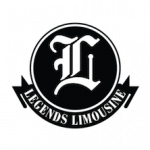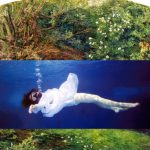Conversations | Ben Hartley, Executive Director of Orama Consulting & Part of the NYFA Learning Team
“In these political times, I feel that [NYFA’s] Immigrant Artist Program is even more essential and its message more urgent.”
Meet Ben Hartley, NYFA Consultant for the Immigrant Artist Mentoring Program nationwide expansion, which is made possible with the support of Ford Foundation. With over two decades of experience in the international corporate and not-for-profit arenas, Hartley has worked with some of the most prestigious institutions in the world. He has extensive experience in a number of areas that bring valuable insight into NYFA’s Immigrant Artist Program.
NYFA: How was it for you coming to the U.S.? Can you tell us how your career in the arts started?
Ben Hartley: I grew up in Australia and was fortunate to have parents who were opera singers before they went and got “real” jobs. It was their love of the arts, their encouragement to my brother, sister, and I to listen and play all types of music, go to theatre and museums, and generally have an appreciation of the arts, that lead me to come to the U.S. to study arts administration at the City University of New York, Brooklyn College (MFA Arts Administration). I knew that I didn’t have the talent to be an artist (my career had peaked at age 11 on the stage of the Sydney Opera House, playing the guitar with 15 other children), but felt that I could help organize, manage, and generally assist artists. Before leaving Australia, I had only a vague idea of what arts administrators did. I had previously been to New York and found it magical, terrifying, and exciting. I knew that I had to get back to this special place. With a suitcase of clothes (without a winter coat) and a backpack full of cassettes, I arrived in New York in the summer of 1988.
I embarked on my MFA degree program knowing little, but being curious about everything. All of the classes were at night, so it left the days free for internships. I was eager to try everything and so took on two internships a week for each of my semesters. One day I was with CBS Television, watching the Berlin Wall come down, live from the CBS broadcast center, and then the next I was in the basement of the Soho Repertory Theater, sharing the paper clips that I had smuggled out of CBS with the under-supplied theater company. I ended up with internships ranging from Columbia Artists Management, the huge artist and touring company, to Roundabout Theater. However, it was my internship with the press and marketing department of the Brooklyn Academy of Music (BAM) that started me on my career. I was very fortunate that the head of the department (who had also taught me during my MFA) hired me after I had returned (from another internship I had taken over the summer at the Royal Court Theatre in London). To this day we are still friends. I started as the junior in the press and marketing department, taking phone calls, answering media questions, and generally learning as much as I could about the arts and how the media covered it. I got to know the journalists and their specialties and spent many happy hours sitting in the BAM theaters enjoying some of the most exciting and risk-taking theater, dance, and music performances. I had never seen anything like it. To see Robert Wilson, the director, spend four hours in rehearsal getting a precise lighting cue just right and then to see the final piece realized, was an amazing experience.
When I first arrived in New York it was both daunting and exciting. I knew no one in the entire city and had to slowly understand the American way of interacting, doing business, and living. It was difficult. Even though we both speak English, the nuances and social patterns are so different in each country. I’m still adjusting to this day.
NYFA: You’ve been working with artists directly and indirectly for many years and in many capacities. In what way do your previous roles inform the current work you do as a consultant for NYFA’s IAP nationwide expansion?
BH: I have had the pleasure of working with some of the greatest performing and visual artists, ranging from dancer Bill T. Jones to musician Yo Yo Ma and artist Robert Rauschenberg. I have been fortunate to travel widely, both professionally and personally. My work with the Guggenheim Museum, heading up a global cultural media company (Louise Blouin Media, publishers of Art + Auction, Modern Painters, and Gallery Guide magazines as well as online platform artinfo.com) and work with the Museum of Arts and Design, provided me with broad access and the opportunity to meet wonderful and talented people. However, it has been my discovery and enjoyment of non-western artists that has challenged me and ultimately lead me to understand some of the amazing breadth of contemporary and traditional arts that have been and continue to be created around the world. I have always been curious about other traditions and art forms. Our first IAP weekend boot camp in Newark included 18 artists from 18 different countries. What an incredible testament to the diversity and talent that has always made America such a culturally-rich and special place.
NYFA: Why did you decide to play such a big role in the Ford IAP expansion? Why do you think it’s important?
BH: The IAP is a wonderful combination of professional skills training with carefully-chosen mentorship relationships. To see these two elements in tandem is to see a powerful collaboration between the practical and the inspirational. I feel fortunate to have been brought into this NYFA Learning program. The team already has such a great history of providing training, guidance, and leadership to artists. I’m just hoping to continue this work. When we talk about “immigrant artists,” it’s very hard to actually define what that means. There are so many immigrant stories and so many motivations that bring people to the U.S. However, we believe that there are two elements all immigrants share: a lack of access to resources and a lack of access to networks. We hope that the IAP will provide these tools and an essential pathway to developing a sustainable artistic practice. In these political times, I feel that the IAP is even more essential and its message more urgent.
NYFA: What advice do you have for immigrant artists looking for opportunities in New York?
BH: New York is a city rich with opportunities, but also incredibly challenging to negotiate. The city is expensive, resources are scarce, and competition is high. However, for immigrant or any artists, there are so many opportunities and organizations that are here to help. NYFA is a great resource, but so are government agencies (such as the Department of Cultural Affairs or the Lower Manhattan Cultural Council), arts organizations (Creative Capital, Volunteer Lawyers for the Arts, and others), and general community resources such as the New York Public Library for the Performing Arts. The opportunities to see great art for free are boundless in New York–stroll through the galleries of the Lower East Side, Chelsea, or Bedford Stuyvesant; take in a performance at the World Financial Center, or Celebrate Brooklyn; or enjoy free theater in various parks throughout the city during the summer. The Queens Museum, Snug Harbor (Staten Island), and The Bronx Museum all have incredible programs. Sign up for the NYFA professional development programs and look at the Resources section of NYFA’s site, meet other artists and professionals and start building your base of support.
Learn more about Ben Hartley and Orama Consulting.
This interview is part of the ConEdison Immigrant Artist Program Newsletter #101. Subscribe to this free monthly e-mail for artist’s features, opportunities, and events. And there’s still time to apply for IAP Oakland!
– Interview conducted by Alicia Ehni, Programs Officer, NYFA Learning.
Image: Ben Hartley at IAP Newark meeting, Photo by Judy Cai.






